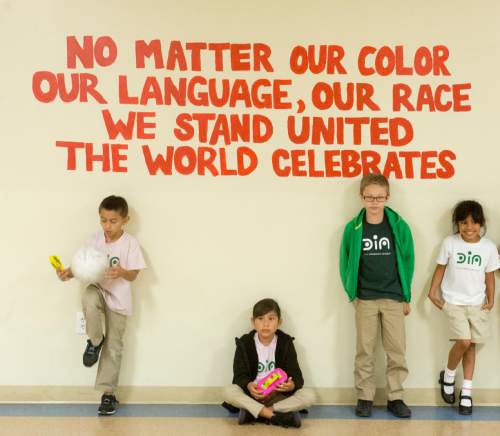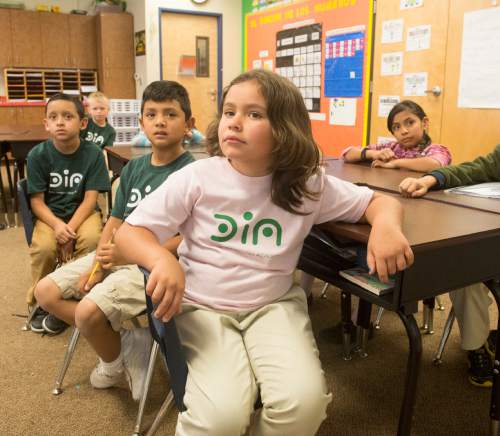This is an archived article that was published on sltrib.com in 2014, and information in the article may be outdated. It is provided only for personal research purposes and may not be reprinted.
Charter school students in Utah are whiter and wealthier than their traditional public school counterparts, according to a report released this week.
The National Alliance for Public Charter Schools ranked Utah 24th out of 26 states for the health of its charter school movement, with Utah scoring low marks for racial and economic diversity.
Minority students made up 19 percent of charter school enrollment during the 2012-2013 school year compared to 23 percent of students in Utah's traditional public schools.
The disparity was larger in terms of income, with 17 percent of charter school students qualifying for free or reduced-price school lunch, compared to 35 percent of children enrolled in traditional schools.
Roughly 9 percent of the state's total public school population is enrolled at charter schools.
Royce Van Tassell, executive director of the Utah Association of Public Charter Schools, said the report points out a lack of diversity but does not include a number of new charter schools that target immigrants and other at-risk student populations.
"I think that as these schools come online, you'll see those numbers change," he said. "This report simply doesn't recognize the gains that have already been made."
The charter school movement began in the 1990s and advocates say the schools promote innovation in public education by providing school administrators with greater independence and flexibility.
Charter schools receive public funds, but are overseen by a governing board rather than an elected district school board. And charter school teachers are at-will employees not covered by the union-negotiated, yearlong contracts standard at public schools.
Utah Charter Network Executive Director Kim Frank said that a lack of access to transportation impedes low-income students from attending many charter schools. Unlike traditional school students who are bused by the school district, she said the majority of charter school students rely on their parents to drive them to and from classes each day.
"That makes life difficult for those folks," she said.
She said the Utah Charter Network is working with lawmakers on legislation to address those issues, such as offering a public transportation reimbursement.
"We do have several schools that are reaching out specifically to low-income families," she said.
Michael Westover, principal of Dual Immersion Academy, said the demographics of a particular charter have a lot to do with that school's mission and location.
His school is roughly 95 percent minority and 90 percent low-income, which he attributes to a focus on bilingual education and its location on Salt Lake City's west side.
"We have a very specific mission," he said. "We're proud of our multiculturalism."
Westover, who also serves on the governing board for Aristotle Academy in American Fork, said he doesn't believe the overall lack of diversity in Utah charter schools is the result of discrimination.
"A lot of it has to do with your neighborhood," he said. "It's certainly not for a lack of trying."
But Angela Rowland, principal of the Utah International Charter School, said more can be done at many charters to proactively reach out to low-income and at-risk students.
She said many schools are located in affluent areas away from bus and transit lines. And too many administrators rely on their web presence to recruit new students, she said, rather than making an effort to seek out families with limited computer access.
"There's nobody that doesn't want diverse kids, I truly believe that," she said. "But hardly anyone wants to do the work it involves."
Van Tassell said proponents of charter schooling make concerted efforts to provide a variety of alternative education options for families. But enrollment is ultimately influenced by the demand for a school in a particular area and the decisions of a student and their parents.
"There is an obligation to make sure that those choices are available everywhere and once those choices are available, the responsibility falls to the parents as to where they want their children to attend," he said.
Van Tassell said the growth of alternative education in the state has been slowed by funding disparities between charters and traditional schools.
"Obviously we don't have the equitable funding that the state needs and that has long been a challenge for Utah's charter schools."
The report by the National Alliance for Public Charter Schools recommended adjusting Utah's property tax split to equalize funding between charters and other public schools.
It also suggests that Utah strenghten accountability policies for charters, provide greater autonomy for charters and close chronically low-performing schools.













